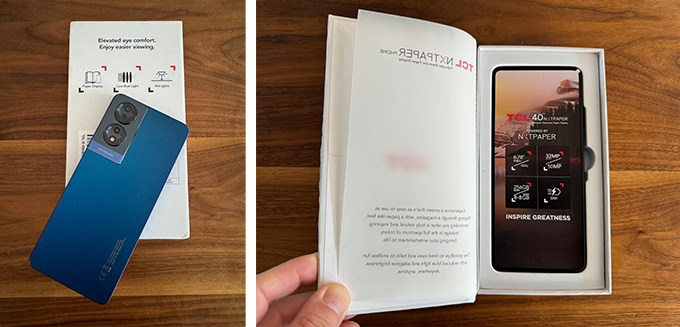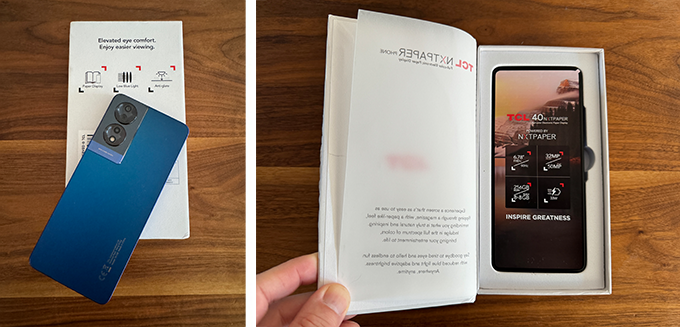
Rosie Hopes
CCS Insight is a leading research and advisory company focused on the connected world and the future of technology.
As someone who has suffered from migraines for many years, my biggest triggers — and the constant banes of my life — are computer and phone screens. I’ve been sensitive to blue light and flickering for many years, but when I developed a migraine variant balance disorder in 2023 my sensitivity rose to new heights.
For months I couldn’t look at a computer or phone screen for more than 15 minutes at a time without getting a headache (and a resulting migraine if I didn’t stop straightaway).

Although it sounds counterintuitive, I’ve used my phone more in the past year than I probably ever have before. This is because I listen to more audiobooks, do most of my writing by dictation and find life admin easier on a smaller screen rather than using my laptop. So even though I try to look at the screen as little as possible, my phone is more vital to my day-to-day activities than it ever was when I was healthy.
I’ve been on the hunt for devices that might allow me to function more normally, with limited success. Part of the reason is that I’m not able to spend long enough on a screen to do thorough research into the alternatives out there — ironic, isn’t it? So, when my friend mentioned that his work had been trialing a smartphone with an electronic paper display and asked if I wanted to give it a test drive, I said yes, please!
I must say that I wasn’t particularly hopeful. I had an ill-fated trial with an Onyx Boox Mira e-ink monitor, which plugs into your computer and essentially allows you to work with an e-ink screen. It was painfully expensive and after a few uses it started flickering every time I moved the mouse. I assumed after that experience that the technology just isn’t good enough or cheap enough yet.

But I’m happy to report that I was wrong! Maybe it’s an overdramatic statement but the TCL 40 Nxtpaper smartphone is an absolute revelation for me.
The screen of the TCL 40 Nxtpaper isn’t like anything else I’ve experienced. It’s described in many places online as an “electronic paper display”, but it doesn’t use e-ink like an e-reader.
TCL has developed a full-colour display that emits 60% less blue light than a traditional phone at a hardware level, meaning that users with sensitivity to blue light don’t have to turn the screen to an unpleasant shade of yellow to get the same benefits.
This threw me — I’m so used to devices with a yellow screen filter that the whiteness of the screen made me flinch a bit in apprehension at first.
The screen is also fully matt, reducing reflections by up to 90%. I didn’t notice this as a positive when I started using the phone, but as soon as I looked at other phone screens, I realised what a difference it makes.
It makes me wonder why displays are made reflective in the first place… you can’t see anything outside in the sun and the surface smudges with fingerprints.
The TCL 40 Nxtpaper’s matt screen sidesteps those problems.
It offers three viewing modes:
- Full-colour mode — looks like a normal phone screen.
- Nxtpaper colour mode — a dampened version that removes backgrounds and mutes colour tones, like a coloured e-ink display.
- Nxtpaper ink mode — a black-and-white dampened version that looks like a traditional e-ink display.
You can easily toggle between modes using the main swipe-down menu. I have mine permanently on the Nxtpaper colour mode as I find it easiest on my eyes, but I switch to full-colour mode to take or view photos.
Personally, I don’t have a use for the black-and-white ink mode. Still, the ability to switch between these options so easily is better than anything else I’ve ever used.
Overall, I find this phone so much more comfortable to use than any other I’ve come across. I tend to have the brightness set to between 10% and 20% when I’m inside and on auto-adjust when I go outside. It’s perfectly capable of running all the apps I use regularly, including messaging apps like WhatsApp and Gmail, audio apps like Spotify and Audible, mapping and navigation apps, and tools I use for writing like NaturalReader and Write by Voice.
As you can see, it’s not like I’m using the phone for any particularly hardcore work, but the TCL does everything I need it to. Sure, it might not be able to keep up pace with gaming performance on the latest top-end smartphones, but that’s the last thing I care about as long as I can use the apps I need on a regular basis without extreme discomfort.
It’s worth mentioning that this phone doesn’t completely solve all my issues. It still makes me feel ill to use it for long periods, especially in full-colour mode — I spent about two hours playing around with it when I first got it and had a migraine the next day as punishment.
Lesson learned: moderation is still required. This might not have been helped by being forced to do set-up at full brightness. This wouldn’t bother most people, but it certainly bothered me. It was only after about 10 minutes of setting up the phone that I was able to use the settings to lower the brightness and try Nxtpaper mode for the first time.
I’ve also had some slight user frustrations. I’ve found the fingerprint sensor a bit hit-and-miss, and there’s no getting away from the fact that the display is less responsive than a normal screen. I particularly noticed this on banking apps.
But for me, the benefits of the display outweigh the occasional clunkiness, and it’s a revelation to be able to use my phone again as normal without even worrying that it will make me feel ill.
So, to my fellow migraineurs: the TCL 40 Nxtpaper is a brilliant smartphone for anyone with sensitivity to blue light and flickering. I’m looking into TCL’s Nxtpaper tablets too, which offer the same technology and could make blogging, writing and Internet browsing much easier for me. As someone who has struggled to find accessible and affordable technology that won’t make me ill, I’m hopeful that this could mark a turning point for people with screen sensitivity.
Written by: CCS Insight
This article was originally written by Rosie Hopes following her testing of a loan unit of the TCL 40 Nxtpaper smartphone via CCS Insight analyst Leo Gebbie. Rosie suffers from chronic migraines, which are regularly triggered by exposure to screens. Read Rosie’s full review of the device here
INFO SUPPLIED.

